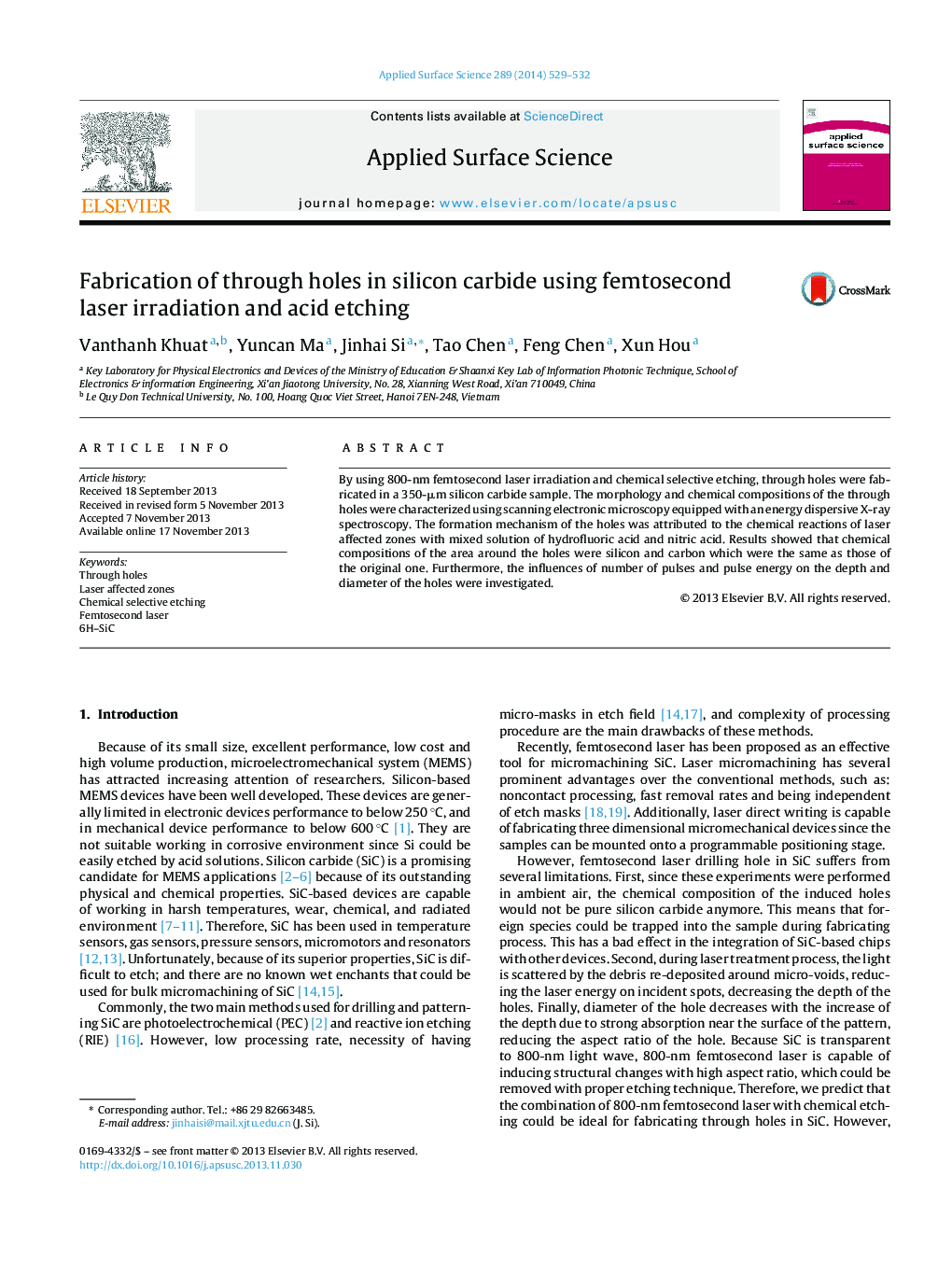| Article ID | Journal | Published Year | Pages | File Type |
|---|---|---|---|---|
| 5359017 | Applied Surface Science | 2014 | 4 Pages |
Abstract
By using 800-nm femtosecond laser irradiation and chemical selective etching, through holes were fabricated in a 350-μm silicon carbide sample. The morphology and chemical compositions of the through holes were characterized using scanning electronic microscopy equipped with an energy dispersive X-ray spectroscopy. The formation mechanism of the holes was attributed to the chemical reactions of laser affected zones with mixed solution of hydrofluoric acid and nitric acid. Results showed that chemical compositions of the area around the holes were silicon and carbon which were the same as those of the original one. Furthermore, the influences of number of pulses and pulse energy on the depth and diameter of the holes were investigated.
Keywords
Related Topics
Physical Sciences and Engineering
Chemistry
Physical and Theoretical Chemistry
Authors
Vanthanh Khuat, Yuncan Ma, Jinhai Si, Tao Chen, Feng Chen, Xun Hou,
